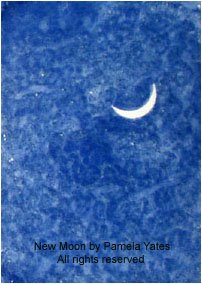Audacious balance, creativity and Ten Zen Seconds
If we look around we'll find there's a whole bunch of successful, producing artists who maintain a healthy balance of tender-hearted compassion and resilient toughness. They've learned to keep their hearts open to the mystery while recognizing and letting go of apathy and materialism.
Artists and others can decide to learn and practice this sort of healthy balance, first, by being aware it's possible and then by learning about and modeling the behavior - using awareness, practice, patience and maturity. There's lots of thoughtful books and guides about how to practice letting go, becoming mature people, honoring the sacred self and some suggested reading is included below. A great new book just released by author Dr. Eric Maisel called Ten Zen Seconds provides guidance on how to increase your sense of balance by following a simple, effective method of mindfulness practice. I'm excited by the opportunity to interview Eric Maisel about his new book on Friday, April 20. We'll chat about the methods described in his new book and the benefits specifically for artists and other creative people. I'll be asking questions about this practice can benefit my clients with the issues they frequently deal with in their creative work. Until now, no one has married the best of Eastern and Western thought into a simple technique that produces breakthrough results with only a few seconds’ effort. I invite you to check back with us for that interview on Friday, April 20.
Audacious balance allows artists to commit to big, audacious dreams and goals that are meaningful to them without feeling overly exposed, vulnerable or emotionally adrift. Balance provides safety in the sometimes harsh world of the arts and arts criticism. Maintaining healthy balance requires a sense of community. Community is vital for most of us. We are tribal people, all of us. Even in times when we're isolated or alone for a time, a person can hold within themselves a strong sense of community. Communities are extended family and friends, neighbors, patrons, specialized communities for the arts, as well as authentic virtual communities via the internet. The measure of a supportive community is its ability to offer the artist compassion, acceptance and respect for the artist and her work. If an artist doesn't feel part of a supportive community, deciding to find a meaningful one is a worthwhile goal. It's not so important how often the connection is made in the external physical world, as it is to feel strongly connected. Another measure of community is the self-trust it nurtures for the artist in her or his creative work.
Two complex steps in the process of building healthy balance are, first, to decide that compassion and justice matter and, second, that you and your creative work matter. Sounds simple enough, doesn't it? Applying healthy balance means being able to handle success and rejection while continuing to nurture and develop your creative work with focus and clarity. Healthy balance allows the artist to observe the changing whims of buyers and the marketplace while feeling in charge of deciding to allow or disallow these things to influence their creative work.
Artists are the carriers of important dreams for all people. Artists want to share their creative work because it's natural to want to share the special gift given to each one of by the Creator. So, it's only natural to honor our audacious dreams, give voice to mighty goals while maintaining a soft, gentle and protective watch over ourselves as we walk our creative path. We will stumble because we are human but hopefully we get refreshed and re-choose to embrace and celebrate the creative process. Artists hold a special place in society. They are the storytellers, visionaries, historians, prophets. They can choose to see with the eyes of the heart even though the depth of that vision can be challenging because they'll feel and sense things in ways other people don't.
The challenge for the artist is to honor all this while remaining humble and awed by the starlight which illuminates our path.
*****
A word about the suggested reading list. If a book appears to be directed to a specific target group, please try to ignore that fact because each of these books can offer something important. Creative people of all ages and backgrounds often say that they doubt themselves, their creative work, their wisdom and perceptions. I hope the books listed here bring you strong, affirming teachings written in many different ways to bring good things to many people. Have fun - be curious - enjoy!
(1) Ten Zen Seconds by Dr. Eric Maisel
(2) Fearless Creating by Dr. Eric Maisel
(3) The Sacred Tree - Reflections on Native American Spirituality published in Canada by Four Worlds Development Press, Four Worlds Development Project, University of Lethbridge; in the USA by Lotus Light, Wilmot, Wisconsin. (ISBN 0-941524-58-2 Library of Congress #89-63193)
(4) The Lakota Way, Stories and Lessons for Living by Joseph M. Marshall III.
(5) No Word For Time, The Way of the Algonquin People by Evan T. Pritchard.
(6) The Compassionate Rebel, interviews and stories written and compiled by Burt F. Berlowe, Rebecca A. Janke, and Julie D. Penshorn. Growing Communities for Peace. web: www.peacemaker.org.
(7) Alcoholics Anonymous by Alcoholics Anonymous World Services, Inc.
(8) 12 Steps to Self-Parenting for Adult Children of Alcoholics by Philip Oliver-Diaz and Patricia A. O'Gorman.
(9) Wounded Warriors - A Time For Healing as told to Doyle Arbogast.


